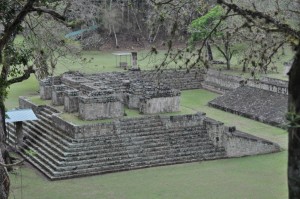 |
Background
Honduras is small with an area of about 112,492 km² and a population of 8.1 million (2011). It was home to several important indigenous cultures, most notably the Maya. The Rio Copán valley was settled by the Maya around 1000 BC and a Mayan royal dynasty ran from 426 AD to about 900 AD.
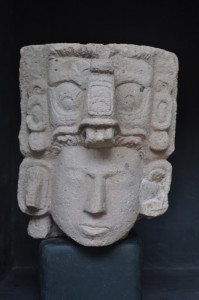 |
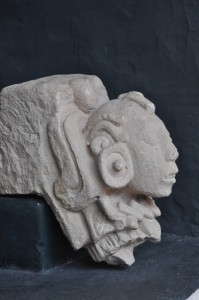 |
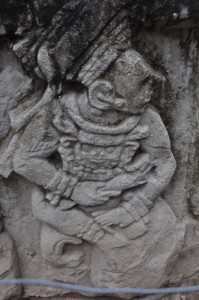 |
The area became part of the Spanish Empire till 1821. The present day Honduras became part of the United Provinces of Central America Federation till 1823. After 1838, it became an independent republic. In the 1840s and 1850s, Honduras was a keen supporter for the policy of regional unity.
The country has sadly suffered from both natural calamity and political instability since independence. It has experienced nearly 300 small internal rebellions, civil wars and changes of governments. Comayagua was the capital of Honduras until 1880, when it was transferred to Tegucigalpa. Constitutional crises in the 1940s led to reforms in the 1950s. Workers were given permission to organize, which led to a general strike in 1954 that paralyzed the northern part of the country for more than two months.
On July 14, 1969, a ‘football war’ broke out when the Salvador army launched an attack on the Honduras army. A cease-fire took place on July 20 and the Salvadoran army withdrew in early August. Some 130,000 Salvadoran immigrants living illegally in Honduras were expelled. In mid-September 1974, Hurricane Fifi caused severe damage to the country.
In 1979, the country returned to civilian rule. A constituent assembly was popularly elected in April 1980 and general elections were held in November 1981. A new constitution was approved in 1982 and President Roberto Suazo assumed power and launched ambitious social and economic development projects sponsored by American development aid. During the early 1980s, the United States established a continuing military presence in Honduras with the purpose of supporting the Contra guerillas fighting the Nicaraguan government and developed an air strip and a modern port in Honduras. Though spared the bloody civil wars, the Honduran army waged a campaign against Marxist-Leninist militias some of which are notorious for kidnappings and bombings.
Honduras is the second poorest country in Central America. The estimated GDP (PPP) and GDP – per capita (PPP) for 2012 is $38.42 billion and $4,700 respectively. It suffers from extraordinarily unequal distribution of income and high unemployment with about 50% of the population living below the poverty line. The country has managed to diversify its economy: apart from production of minerals, coffee, tropical fruit and sugar cane, it now exports clothing to international market and has a growing tourism industry. Its two World Heritage Sites namely the Maya Site of Copán and Rio Plátano Biosphere Reserve together with the Bay of Islands are key attractions for tourists.
Today, the majority of the population is Christian and Mestizo (90%). Amerindian, Black and White account for 7%, 2% and 1% respectively.
April 29 Tuesday: León, Nicaragua – Lake Yojoa Honduras (565km; 13hrs + border crossing: 1 hr)
By 11:30am, we had already cleared all the immigration and customs formalities and continued our way to Lake Yojoa. We stopped for lunch at 12:30pm. Yves a typical Frenchman loves his food: he cannot stand dull and tasteless food. Hence he brought five roast chickens in Leon and made a wonderful cold chicken salad which goes well with avocadoes, onions and mangoes. We also had a cup of tea and fruit salad for dessert. This is the best Dragoman lunch I have ever had!
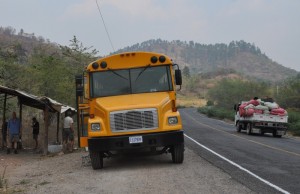 |
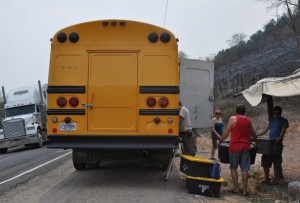 |
We were driving along the central highland and I was amazed by the beautiful scenery, lush vegetation and good highway! When we approached Tegucigalpa, the capital, we were stuck for a while owing to a serious accident on the main highway. Several trucks and 4X4 vehicles were overturned with shattered windows and broken parts scattering over some 200m. The power line was taken down as well. As I was sitting on the left side, I did not have full views. I was later told that there were two dead bodies still lying on the road. How terrible! Then I saw some displaced buildings on the hillside. I wonder whether this is a result of recent earthquakes.
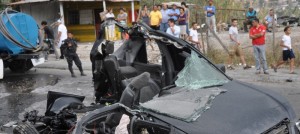 |
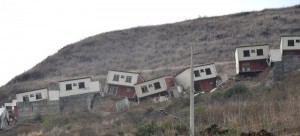 |
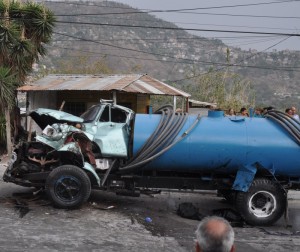 |
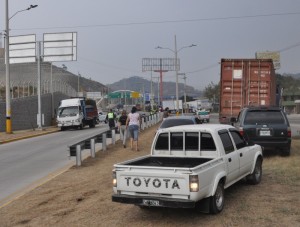 |
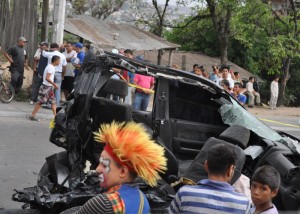 |
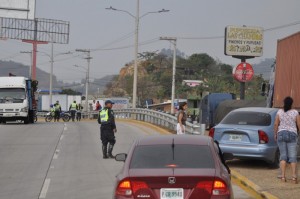 |
Around 6pm, we were hit by poor weather: lightning, thundering and torrential rainfall. It made the driving even more difficult for Yves and Tom. We signed with relief when we finally reached D&D Brewery at 7:30pm.
The hotel set in a jungle brews its own fruity beers. I had an apricot beer for 45 lempiria (L) ($1=20L). I was dead tired and went to bed early.
April 30 Wednesday: Lake Yojoa – Roatán (250km; 6hrs)
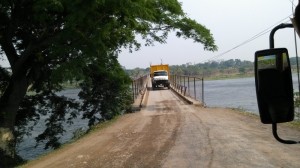 |
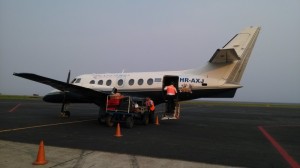 |
Another travel day. We left the hotel before 8am and arrived at the Ceiba airport around 12:30pm. We took a 20-minute flight on a 21-seater propeller plane to Roatán at 4pm. It’s quite a suffocating experience: it was very hot without ventilation till the plane was airborne.
Our group had to split and stayed at two hotels. I together with nine group members stayed at Posada Los Orchideas. I love the place: my room is spacious with sea and mountain views, a large balcony and cooking facilities. Gordon prepared an excellent vegetarian meal for Yvonne, Freddie (Jr), Anika and I. Later in the evening, Victoria and Dave who returned from their dinner joined Gordon, Yvonne and I for a drink-and-chat on our balcony till midnight. I had a most enjoyable and relaxing evening.
May 1-2 Thursday & Friday: Roatán
The Bay of Islands is located about 60km off the north coast with clear waters and abundant marine life. Composed of three main islands (Roatán, Guanaja and Utila) and some 65 smaller cayes, it is Honduras’s main tourist attraction. Roatán is the largest island with a population of 80000. The island is about 50km long and most tourists stay in the narrow stretch between West End and West Beach.
I treasure my free time. The island boasts reefs close to its shore and has been popular with divers and snorkelers. On the first day, I took a snorkeling tour at 8:30am ($20). But it’s not an enjoyable experience with murky and choppy water.
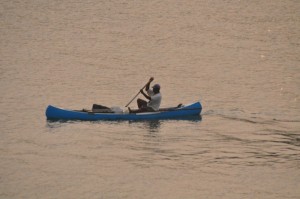 |
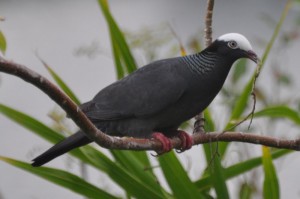 |
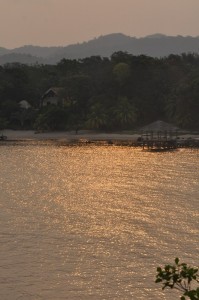 |
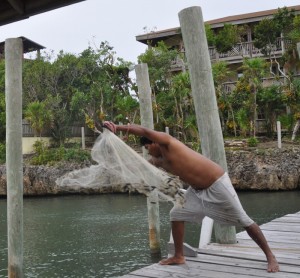 |
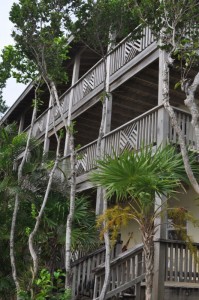 |
Then I spent a few hours exploring the island on foot: I walked from West End to West Beach. I also had eight delicious garlic prawns for lunch before. I took the water taxi ($3) back to West End. The prawns were so salty that I drank two cans of beers when I was back in my room. I was still desperately thirsty. Later in the evening, Yvonne advised me to take some hot tea. I followed her advice and it worked!
On Friday, the sea appeared to calm down. Dave was planning to do a snorkeling trip. I joined him and had a reasonably good snorkel in the morning: the water was clear with plenty of fish. But most of the corals near the shore are dead.
At 1pm, Gordon, Yvonne, Dave, Freddie (Sr) and I hired a minivan for an island tour. Xavier took us on the paved highway on the island passing through Coxen Hole (the main town), French Harbour, and Oak Ridge before arriving at Punta Gorda where the oldest Garifuna community is living. Xavier said they came from St Vincent originally and have kept their language and customs.
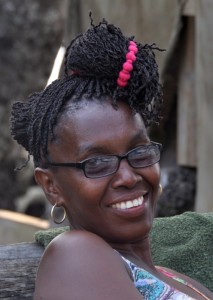 |
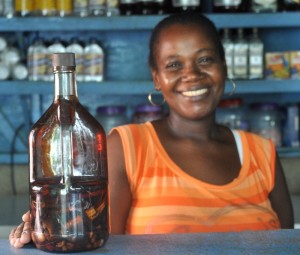 |
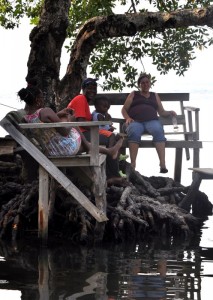 |
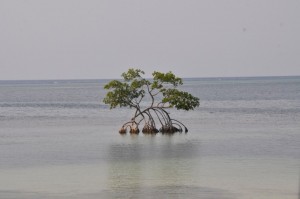 |
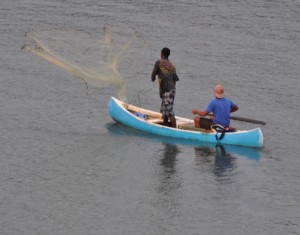 |
We also went to see a huge development project which sells holiday homes and runs a hotel. The project has run into trouble and only few houses are occupied.
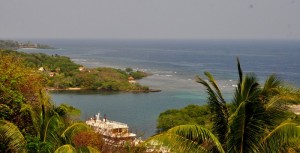 |
I enjoyed my leisure stay on the island. The best part of the holiday was having home-cooking by Gordon and Yvonne. The three excellent dinners only cost me $10!
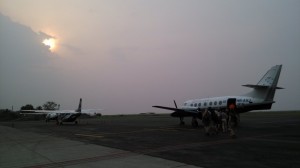 May 3 Saturday: Roatán – Copán (360km; 8 hrs)
May 3 Saturday: Roatán – Copán (360km; 8 hrs)
We took the 6.40 am flight back to La Ceiba. Yves and Tom drove almost non-stop till we reached Copán at 4pm. The small town looks pretty with a central park, many restaurants and some souvenir shops. I did not feel well: I had a temperature and my bones were aching. I had a cup noodle and a papaya and spent the whole evening resting in my room.
May 4 Sunday: Copán Ruins
Copán is regarded as one of the most impressive Maya ruins due to the overwhelming legacy of artistic craftsmanship. A notable Maya dynasty began in this area under Yax K’uk Mo’ (Great Sun First Quetzal Macaw) a warrior-shaman who in 426 AD, established the basic layout of the city. His son created a cult of veneration for his father which continues for over 15 generations. Golden era of Copán begins with the ascension of Moon Jaguar in 553 AD when he constructed the Rosalila Temple (a replica is placed in the Archaeological Museum). Eighteen Rabbit Copan’s “King of the Arts” who reigned from 695 to 738 AD, constructed the Gran Plaza (ball court) and Temple 22. During the reign of Smoke Shell (749-763 AD) construction of the iconic Hieroglyphic Stairway was completed. Yax Pasaj (763-820 AD) commissioned Altar Q and completed the final version of Temple 16, the largest and tallest temple structure. The city began to decline possibly owing to inadequate food resources created by increasing population.
In 1891 British archaeologist Alfred Maudsley began a full scale mapping, evacuation and reconstruction of the site sponsored by Harvard University’s Peabody Museum. In 1959-60, archaeologist Heinrich Berlin and Tatiana Proskouriakoff deciphered the site’s hieroglyphs, leading to the realization that they record the history of the cities and the dynasties. Archaeologists discovered the Rosalila Temple beneath Temple 16 in 1989, the Papagayo Temple in 1993 and Yax K’uk Mo’s tomb in 1998.
I woke up feeling unwell and tired with a temperature. But I soldiered on to complete the 3-hour guided tour. I found the morning air refreshing and the ruins majestic and atmospheric with crumbling stones, half-collapsed temples amid gigantic tall trees, pyramids, and beautifully sculptured stelae in the middle of a jungle. The silence was only broken by the loud cracking noises coming from the macaws which live here.
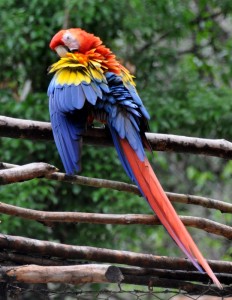 |
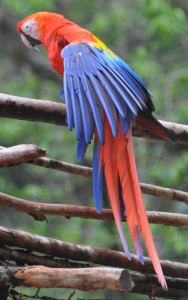 |
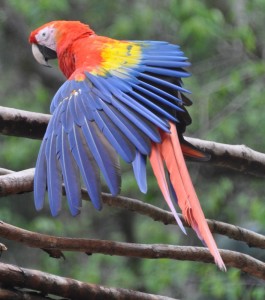 |
Oscar our guide speaks good English and gives us a lot of information. We saw the oldest national tree Ceiba (silk cotton tree) in the country which is over 300 years old on our way to the Acropolis, the inner sanctum which was the reserve of royalty, nobles and priests. For over 400 year, the temples grew higher and higher as new structures were built over remains of earlier buildings. Surrounding the West Court is Temple 11 (Temple of the Inscriptions) and Temple 16 underneath which the Rosalila Temple is located.
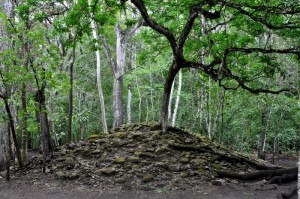 |
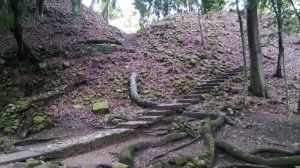 |
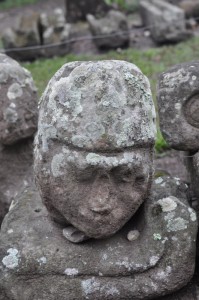 |
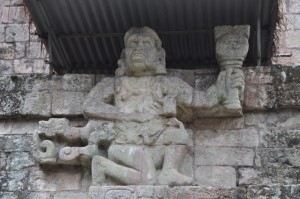 |
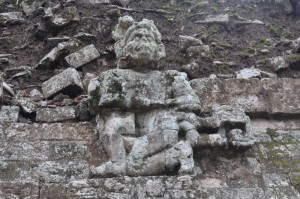 |
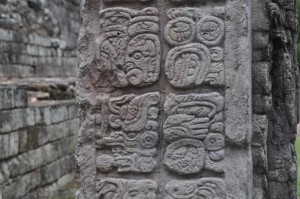 |
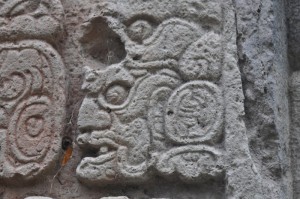 |
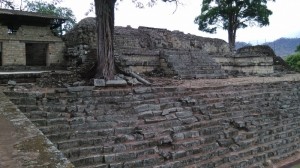 |
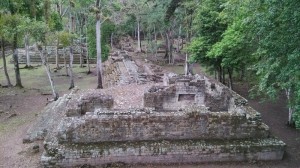 |
We then walked to the East Court and descended to Plaza Central. Here stands a dozen of magnificently carved and exceptional well preserved stelae, several altars and two small pyramid-temples. Most of the stelae represent Eighteen Rabbit. At the end of the plaza is the famed Hieroglyphic Stairway under a vast canvas cover. It comprises the entire western face of Temple 26 pyramid and is made up of 72 stone steps. Every block forms part of the glyphic sequence – around 2200 glyph blocks in all, producing the longest-known Maya hieroglyphic text.
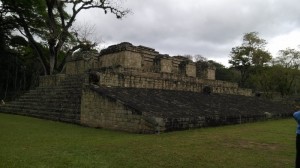 |
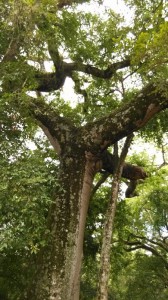 |
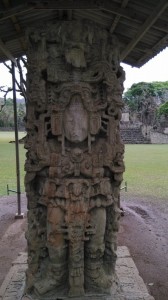 |
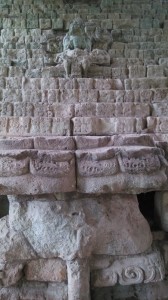 |
We finished the guided tour around 11am. I felt better and decided to do the 1.2-km nature trail. But there was not much to see. Before leaving, I purchased a ticket for $7 to see the archaeological museum. There are many sculptures on display with English subtitles. In the centre is the replica of the Rosalila Temple.
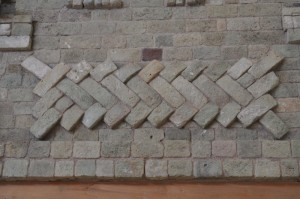 |
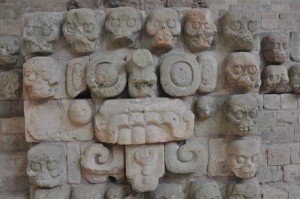 |
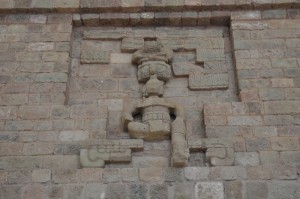 |
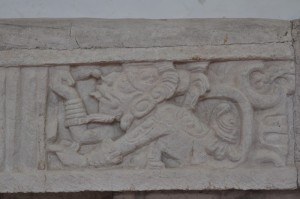 |
I moved at snail’s pace as my legs were tired and my mind was functioning very slowly. After reading all the subtitles and all information available, I still fail to gain a deeper understanding about the dynasties, the ruins, and the Maya culture in Copán. Is it my problem or something is lacking in the presentation?
At 12:30pm, I took a tuk-tuk back to town, had a simple lunch with fish and rice in the market before returning to the hotel. While the rest of the group made their way to the Luna Jaguar hot springs in the afternoon, I stayed in bed. For most of the day, my temperature fluctuated between 38ᴼC and 39.6ᴼC. What’s the problem? I wonder.
May 5 Monday: Copán, Honduras – Guatemala – Suchitoto El Salvador (240km; 8hrs) + border crossing
The shortest way to reach El Salvador from Copán is via Guatemala. We had breakfast at 6:30am and set off at 7am. By 7:45am, we were already at the Honduras – Guatemala border. A brand new and modern immigration and customs building has recently been completed on the Honduran side. Yves collected our passport while we waited and we exited the country within 20 minutes.
Remarks
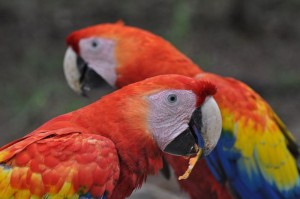 Honduras is a poor but remarkable country. According to the Human Development Index, Honduras is the sixth poorest/least developed country in Latin America, after Haiti, Nicaragua, Guatemala, Guyana, and Bolivia. It had the highest rate of intentional homicide in the world in 2010, according to the UN Office on Drugs and Crime. About half of its population still lives below poverty line. But I find the country beautiful and the people welcoming. Apart from horrific traffic accidents which seem to be daily occurrence, the country and the people are trying to get on and look for a better future. We should give them support.
Honduras is a poor but remarkable country. According to the Human Development Index, Honduras is the sixth poorest/least developed country in Latin America, after Haiti, Nicaragua, Guatemala, Guyana, and Bolivia. It had the highest rate of intentional homicide in the world in 2010, according to the UN Office on Drugs and Crime. About half of its population still lives below poverty line. But I find the country beautiful and the people welcoming. Apart from horrific traffic accidents which seem to be daily occurrence, the country and the people are trying to get on and look for a better future. We should give them support.
After having spent six nights in Honduras, I can hardly claim I know the country and the people. All I can say is that I had a wonderful time in Roátan doing nothing while a miserable time in Copán owing to my illness. I like the country and hope to return one day to see the real Honduras outside its two hot spots for tourists.


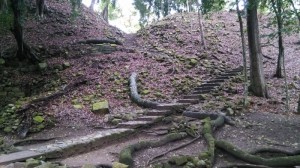

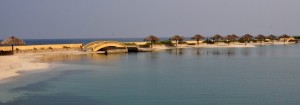
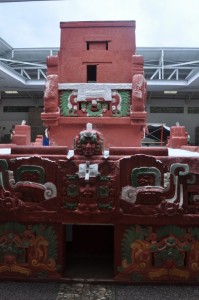
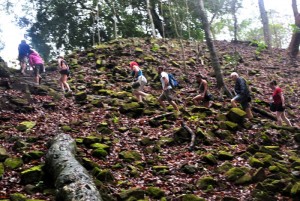
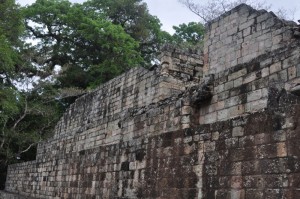
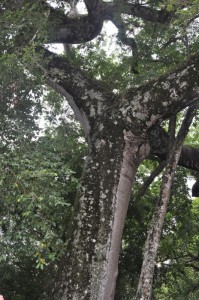
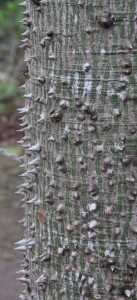

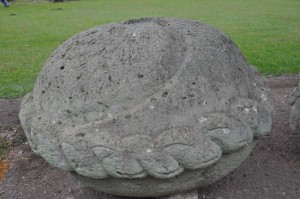
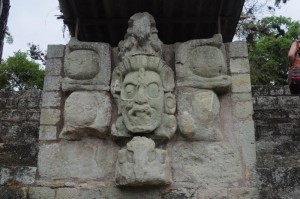
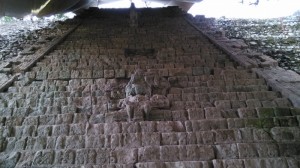
Have you recovered from fever ? You haven’t posted anything for nearly a week. Do take care and let us meet when you are home. I am leaving for a long 6 weeks trip on June 25, but nothing as adventurous as yours. Just a river cruise in Europe and then to Toronto to visit my Dad.